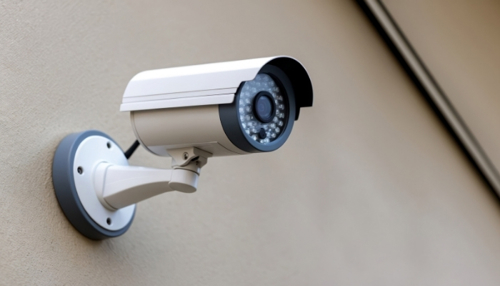
 07 August 2025
07 August 2025
CCTV Camera Systems are one of the most effective solutions for ensuring continuous security today. Atlastek provides secure and smart monitoring infrastructures for various environments, from homes to large-scale businesses, with advanced technology CCTV camera systems.
So, how do CCTV camera systems work, what types are there, and what benefits do they provide? Here are the answers:
CCTV "Closed-Circuit Television" systems are integrated security systems used to collect, record, and monitor the images of a specific area, consisting of cameras, monitors, recording units, and connection infrastructure. These systems manage the monitoring and recording processes from a single control point, ensuring continuous control of security.

CCTV cameras, designed with different features according to the usage area, provide effective surveillance in all environments:
These models are resistant to water, dust, and weather conditions. With a wide viewing angle and high resolution, they provide maximum security in open spaces.
They provide clear imaging in offices, stores, and indoor spaces. Their compact design offers an aesthetic appearance while enabling continuous monitoring of indoor security.
They record high-definition footage in dark environments. With infrared (IR) technology, they provide clear images even in low-light conditions.
These cameras provide long-range tracking in fixed areas. Bullet cameras are professional security cameras developed to capture clear and focused images in narrow-angle areas.
They offer wide-angle viewing and an aesthetic look. Suitable for ceiling mounts, they provide both privacy and wide coverage.
The main recording devices used in CCTV camera systems are:
The main types of cables used in CCTV camera systems are:
When choosing a CCTV security camera system, the following basic criteria should be considered:
CCTV companies determine prices based on the technical specifications of the system and provide customized solutions for each client. CCTV camera prices vary depending on the type of technology used, resolution, and installation requirements. The main determining factors are as follows:

The integration of artificial intelligence (AI) technology with CCTV camera systems has introduced a new era in security. With deep learning and AI algorithms, CCTV cameras now not only record but also analyze human behavior, recognize vehicles and objects, and automatically detect unusual situations. These advancements enhance both the speed and accuracy of image processing.
Atlastek Security Technologies integrates this technology with hardware from leading brands like Hanwha Techwin and Panasonic, taking security solutions to the next level. Supported by smart analytics, alarm integration, and centralized monitoring systems, this setup ensures maximum efficiency and operational security in CCTV use cases.
CCTV camera installation varies depending on the size of the system, the number of cameras, cable distance, and the condition of the existing infrastructure. Proper planning and the selection of suitable equipment are crucial for a smooth installation process.
CCTV camera systems must be installed in accordance with the Personal Data Protection Law (KVKK) and legal regulations related to the protection of personal data. Atlastek Security Systems ensures full compliance with the regulations in every project.